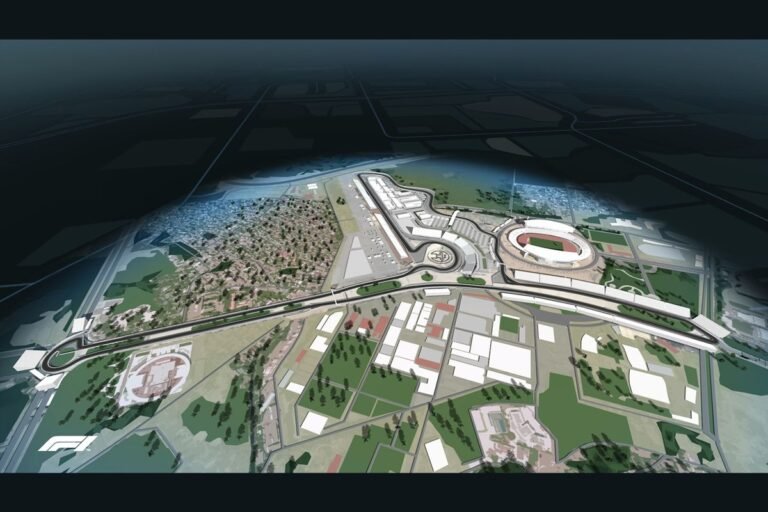Formula 1’s Ambitious 2020 Plans
In the vibrant and competitive world of Formula 1, exciting plans were in place for the 2020 season before the pandemic fundamentally altered life as we knew it. Among the climactic headlines was the much-anticipated return of F1 to the Netherlands for the first time in 35 years, alongside the inauguration of a stunning new race in Vietnam. Fans and participants alike were gearing up for a thrilling year, marked by revitalization and fresh experiences. The organization seemed poised to unveil not only traditional races but also venues that would showcase F1’s global reach and innovation. However, the emergence of Covid-19 abruptly dashed these aspirations, leading to unprecedented challenges.
The Vietnamese Grand Prix Dream and Collapse
Liberty Media, the new owners of the Formula 1 brand, had announced the Vietnamese Grand Prix in 2018, generating excitement and anticipation among fans and stakeholders. Designed with passion and precision by the renowned Hermann Tilke, the layout harmoniously combined the charm of city streets with dedicated sections tailored for the grand spectacle. As construction rolled out in March 2019, enthusiasm grew steadily, culminating in a completion that seemed perfectly timed for a debut race in April 2020.
As fate would have it, this exhilarating plan hit a roadblock. The Covid-19 pandemic caused a ripple effect across sports and events worldwide, and the Vietnamese Grand Prix was one of the unfortunate cancellations. Even as the F1 calendar adjusted and raced returned to other traditional venues, Vietnam remained absent. The situation deteriorated further when Nguyễn Đức Chung, the Chairman of the Hanoi People’s Committee and an instrumental figure in bringing the event to life, was implicated in a corruption scandal. Despite the charges not being directly linked to the race, they overshadowed the future of F1 in Vietnam and sealed its absence in the unfolding sports drama.
A Forgotten Infrastructure
Fast forward five years, the extravagant circuit laid out in Hanoi stands as a ghost of what could have been. Recently, the YouTube channel Beach Office ventured inside this empty grand racing arena, capturing the poignant story told through the decaying infrastructure. Once-pristine landscaping around the track has surrendered to nature, turning into an overgrown wilderness. Illumination features that would have guided the excitement of race day are now diminished, with potholes appearing and wild plants forcing their way through tarmac cracks as the elements reclaim their space.
Interestingly, while the once-vibrant paths and grid marking saw the ravages of time, the start line’s grid boxes remarkably preserved their appearance. The bright white and yellow markings linger, a surreal reminder of the cars that never took their places on the 5th of April, 2020. Observations from a distance may paint a somewhat decent picture of the grand pit building, yet as closer examinations reveal, the signs of neglect are undeniable. What was meant to host the pomp and luxury of a renowned racing event now speaks of a missed opportunity and unfulfilled dreams.
A Shift in Perspective
Amongst the decay, one cannot help but marvel at the complexity and hope that came with the Vietnamese Grand Prix project. The original vision was more than just a race; it was an endeavor to embed F1 in the cultural fabric of Vietnam. While Vietnamese streets continued to bustle with daily commuters and delivery drivers, the shadows of towering lights designed for a grand race now illuminate a daily rhythm of life that was once a backdrop for motorsport glory. It’s a vivid portrayal of how plans can change, yet life carries on relentlessly.
This cinematic exploration shines a light on a moment in F1 history, one that will forever hold a unique place despite never having hosted an actual grand prix. Five years later, the closest fans have come to experiencing the Vietnam circuit was through esports, with its virtual inclusion in the 2020 Formula 1 game. This unlikely pivot speaks to the resilience and adaptability of the motorsport community, illustrating how it can engage fans even amid uncertainty.
Reflections on Resilience
The stark contrast of the lavish plans and the now-derelict racetrack serves as a metaphor for broader experiences during the pandemic. Like the Vietnamese circuit, many dreams were postponed or unraveled, but new opportunities emerged in unexpected places. Fans certainly rallied around alternative experiences, finding joy in virtual engagements and connecting with the sport through different media channels. The F1 community’s ability to pivot—showing that enthusiasm for the sport remained unbroken—reflects resilience, evolution, and a willingness to adapt even in challenging times.
Looking back on this chapter, it’s evident that while the Vietnamese Grand Prix faced unfortunate challenges, the spirit of F1 thrives on ambition and innovation. The road ahead presents a mix of trials and tribulations, yet it remains filled with possibilities waiting to be explored. Who knows? Perhaps one day in the future, F1 will return to Vietnam, bringing with it the excitement and celebration that fans and the city have long awaited.
Conclusion
As we reminisce about what could have been, the Hanoi circuit’s story serves as a reminder of dreams both realized and dashed. The landscape may be overgrown and the pit buildings stand in solitude, but the marks of what could have been remain sharp in the minds of F1 fans worldwide. The resilience of motorsport and the passion of its community guard the hope that one day, Vietnam will witness powerful engines revving down its streets, fulfilling the once-cherished vision for its grand prix. In the arms of time, the specter of this endeavor lingers, hinting at future opportunities to reignite that dream, showing that even in adversity, new horizons always await.



